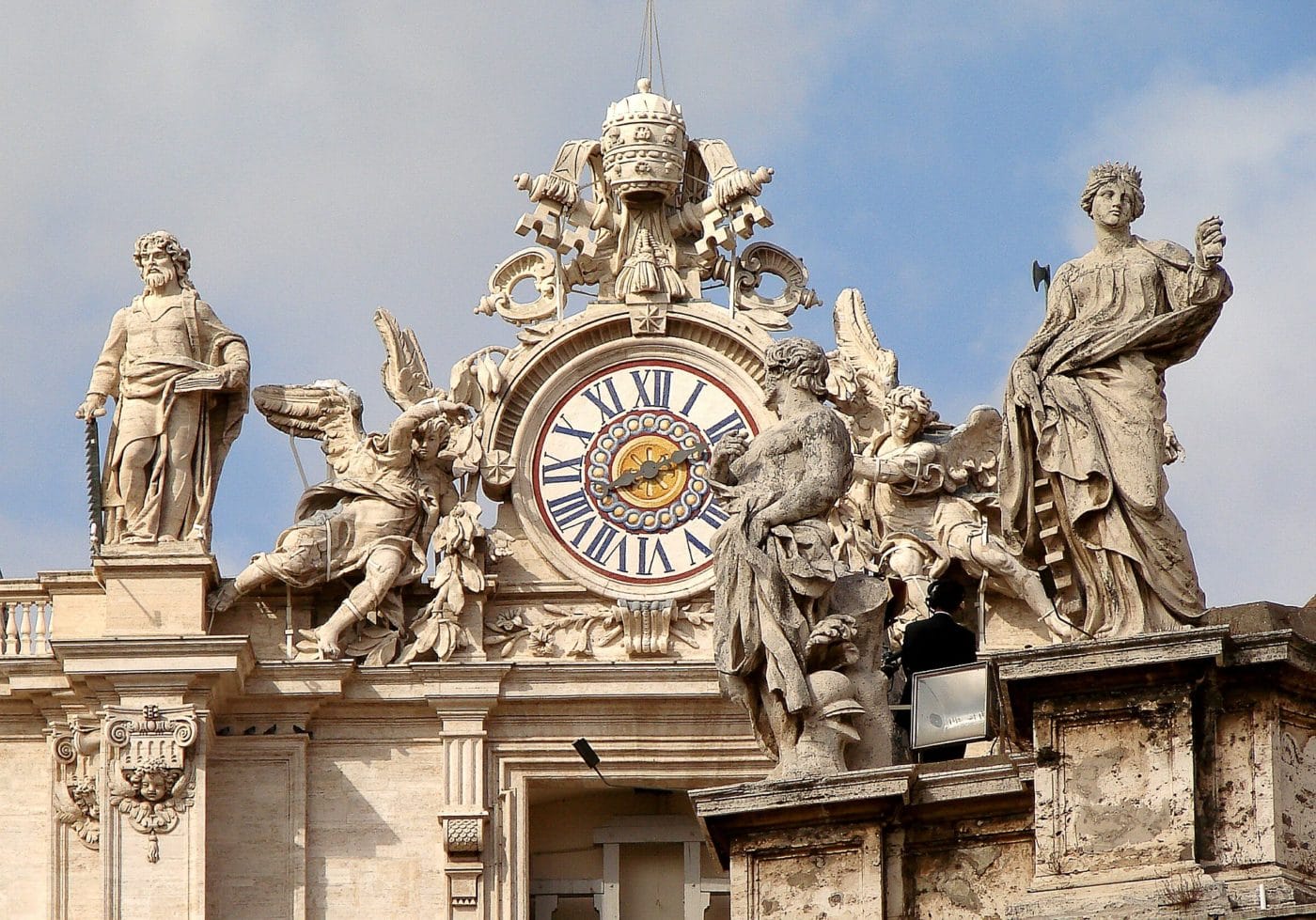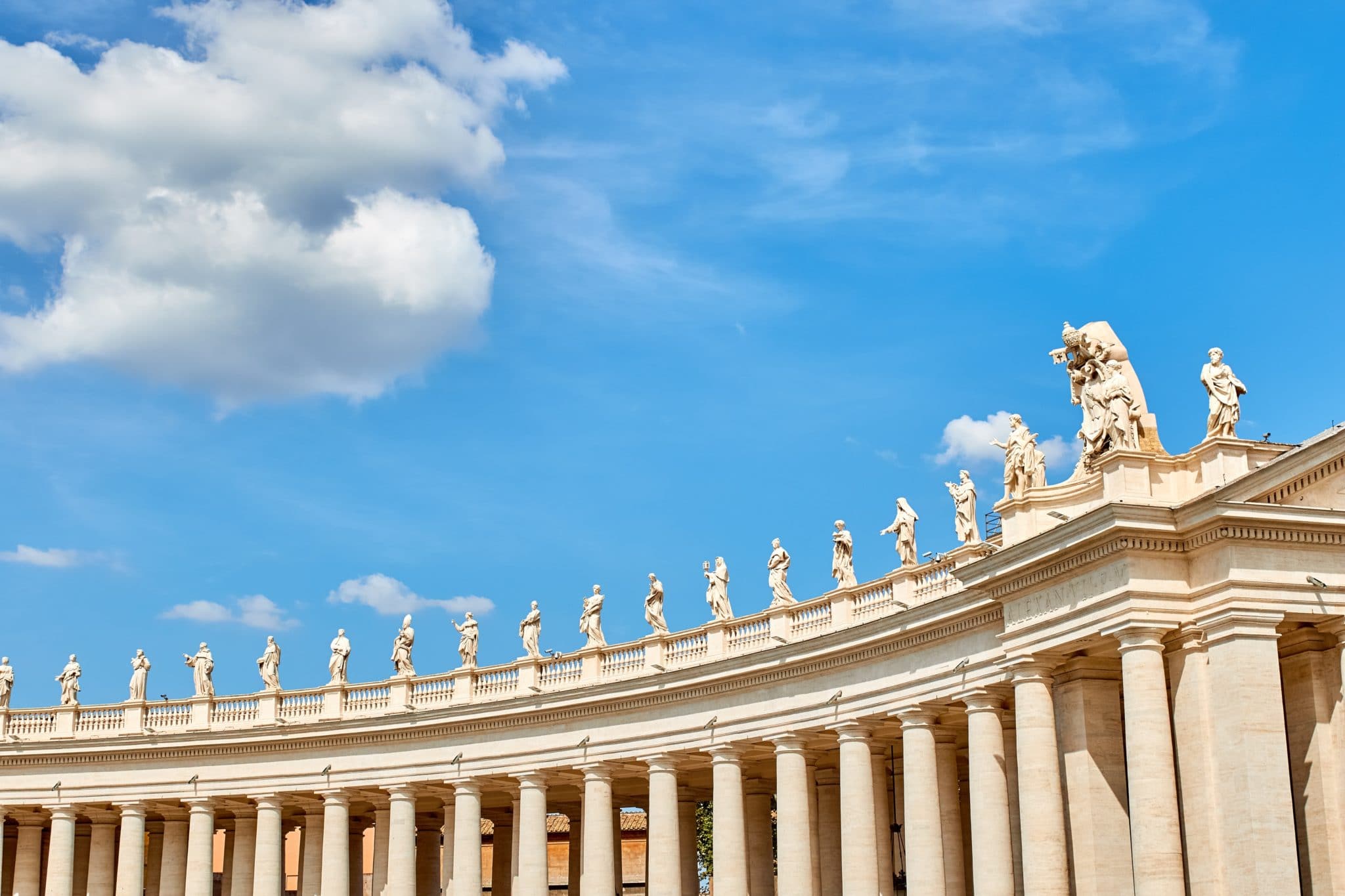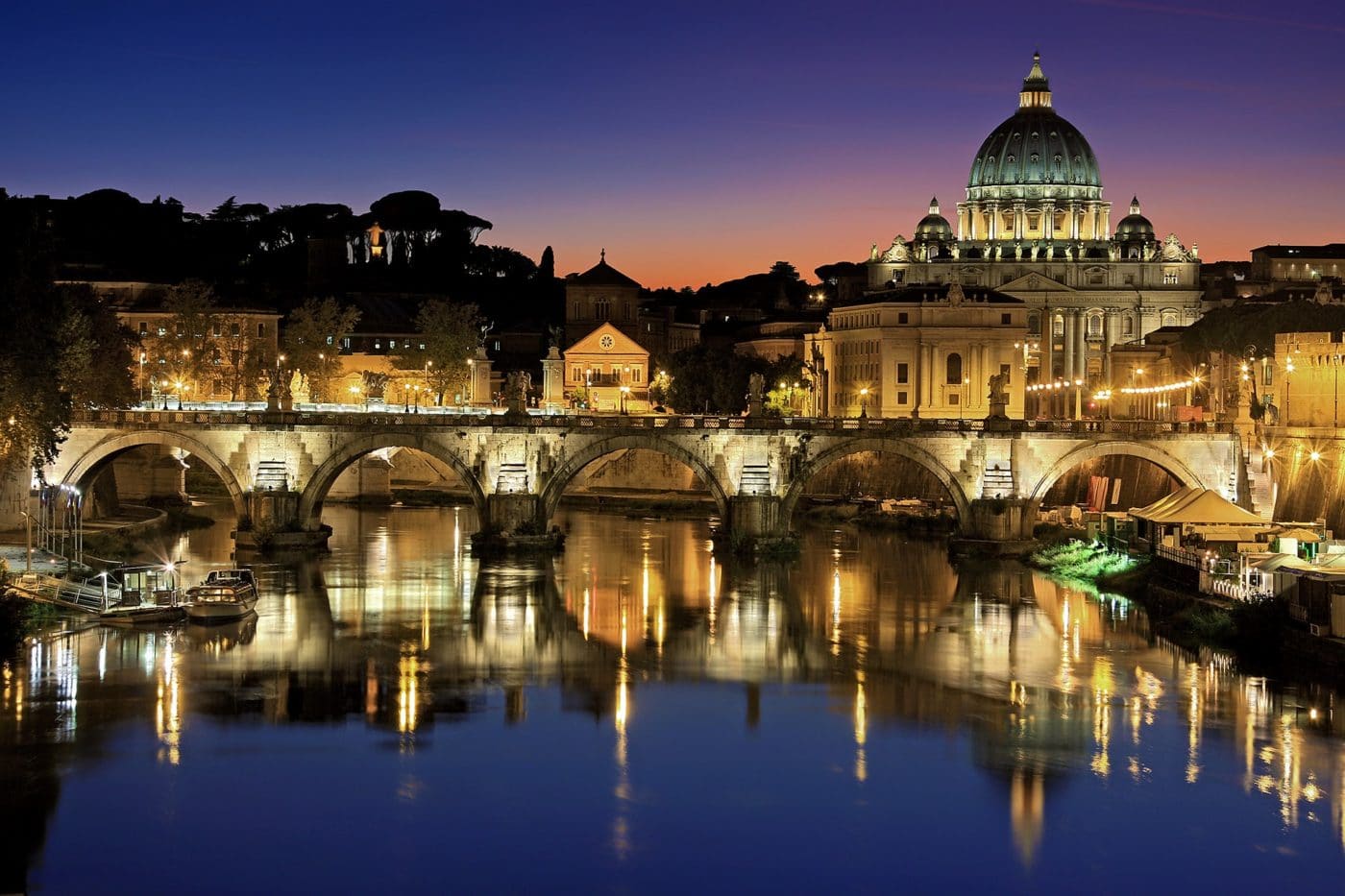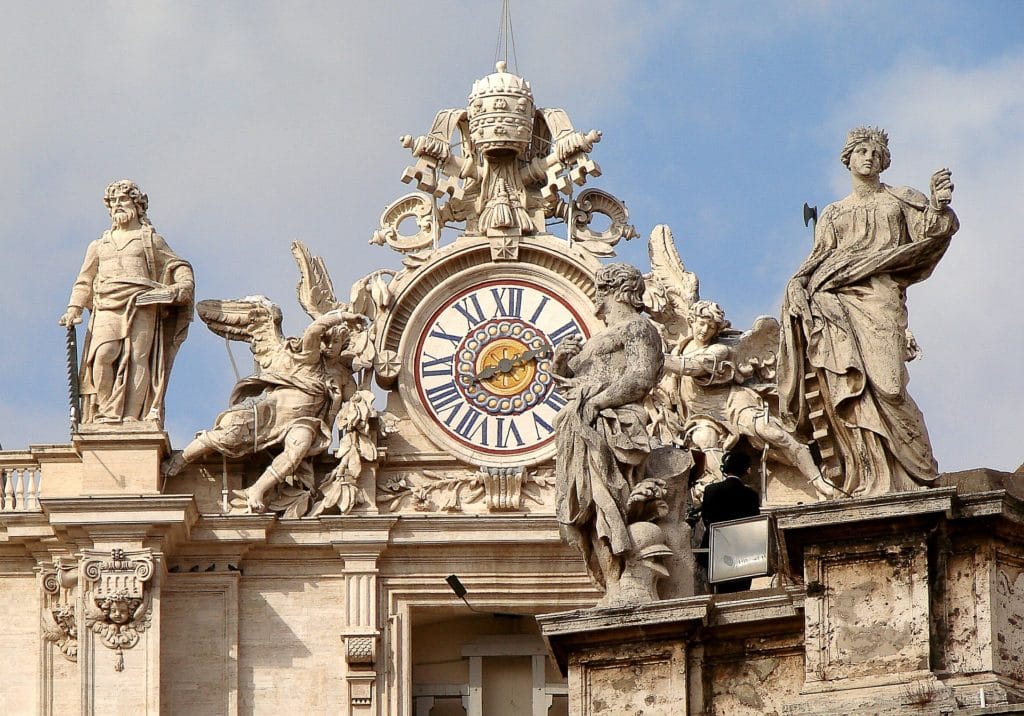
If you’re planning a visit to Rome, chances are you’d like to visit Vatican City too. As well you should.
The museums are full of incredible art, which includes some of the most famous and most recognized in the world.
You’ll also get to visit the largest, and most famous, Catholic church ever built.
But with all these things to see packed into one visit, it can be hard to figure out where to start. So to help you organize your visit, I’ve put together my top 10 things to see in Vatican City.
This list is comprised of the most famous and most popular stops inside Vatican City. While I encourage you to see as much as you can, this list will help make sure you don’t miss the biggest attractions.
I hope you enjoy your visit to Vatican City and that you find this list helpful in narrowing down what you hope to see.
Some of the links in the post are affiliate links. If you make a purchase through these links it helps to support this site at no extra cost to you.
Top 10 Things to See in Vatican City
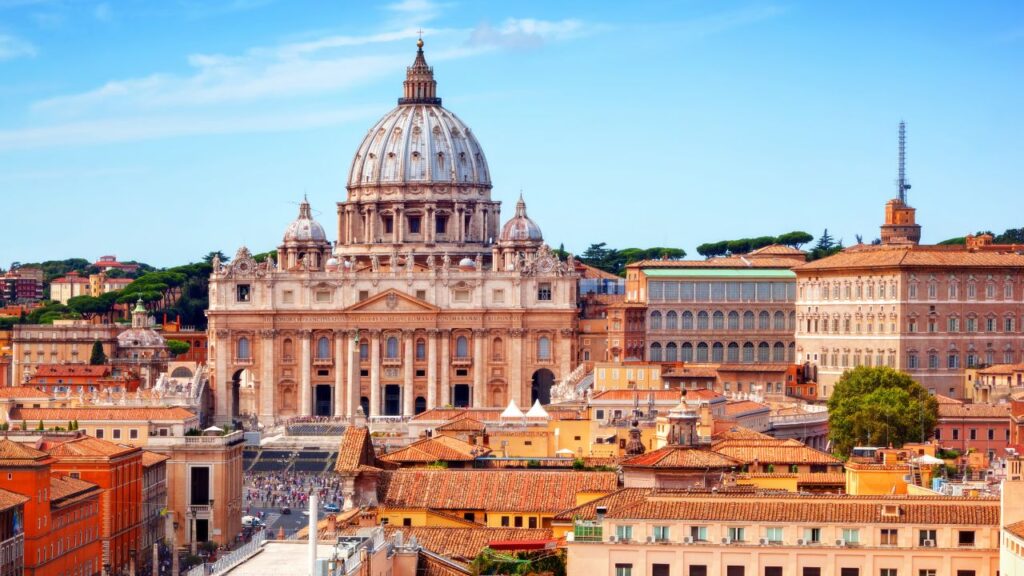
This guide intends to help you identify some of the biggest attractions inside Vatican City. There is so much to see in the Vatican museums, it can get a bit overwhelming.
I’ve included the most well-known and popular attractions down below to help you narrow down what you’ll be looking for during your upcoming visit.
I’ve included links up above for a few of the most popular Vatican tours if you’d like a guide during your visit.
1. The Gallery of Maps
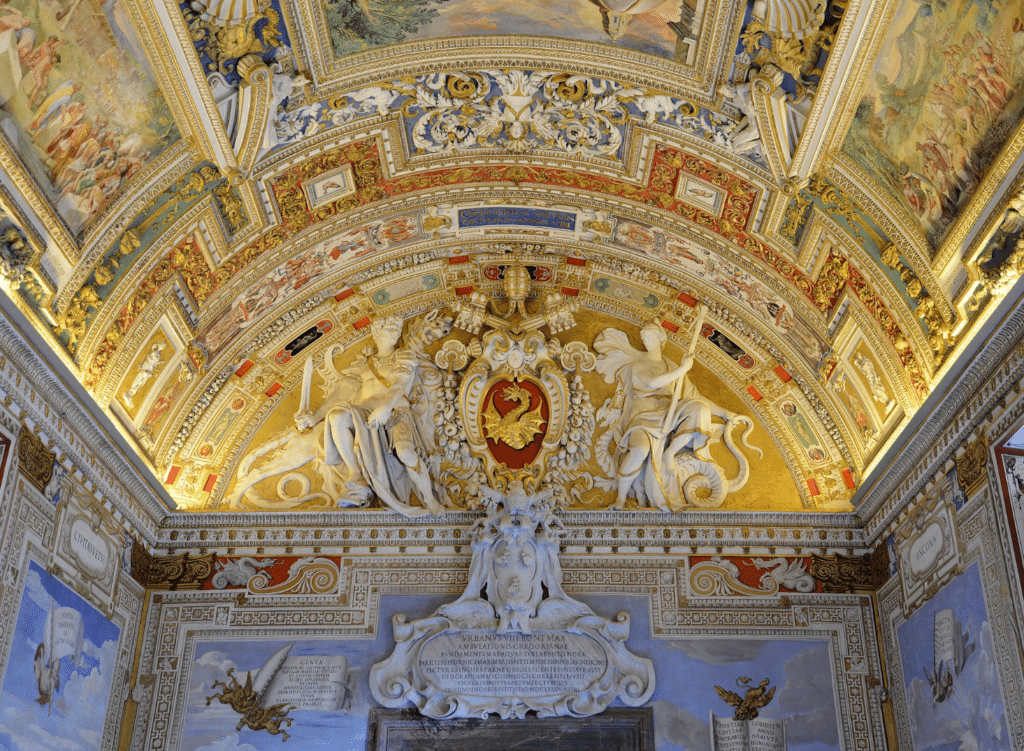
The Gallery of Maps is a long gallery hallway featuring topographical maps of Italy.
Pope Gregory XIII commissioned the paintings to decorate the Vatican in 1580. It took the artist 3 years to complete the 40 panels on display in the long gallery.
The maps are frescoes that depict the entire Italian peninsula. They are said to be about 80 percent accurate in their depiction of the various regions of the country.
Visitors enter the gallery on one side and will walk past all the frescoes in the long hallway before exiting the other end.
This section of the museum can become extremely crowded as people move quite slowly in order to see all the frescoes.
I recommend taking your time and getting some pictures while you wait for those walking slowly in front of you.
The gallery itself is incredibly beautiful, so it’s not a bad place to get stuck for a while.
2. Raphael’s Transfiguration
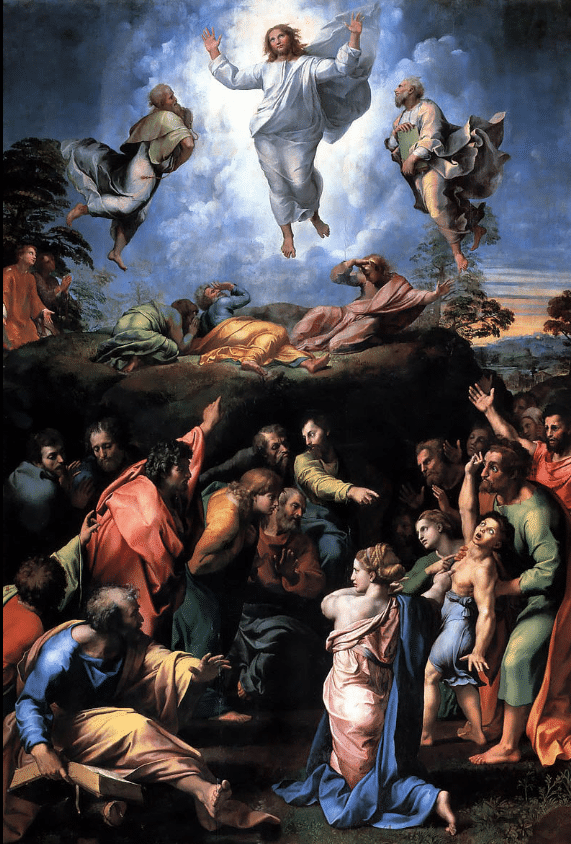
The Transfiguration is the last painting by Renaissance painter Raphael. The piece was commissioned by Cardinal Giulio de Medici as an altarpiece for the Narbonne Cathedral in France.
Raphael worked on the painting from 1516 to his death in 1520. This painting is one of Raphael’s most famous and is considered the highlight of his career.
3. The Sistine Chapel
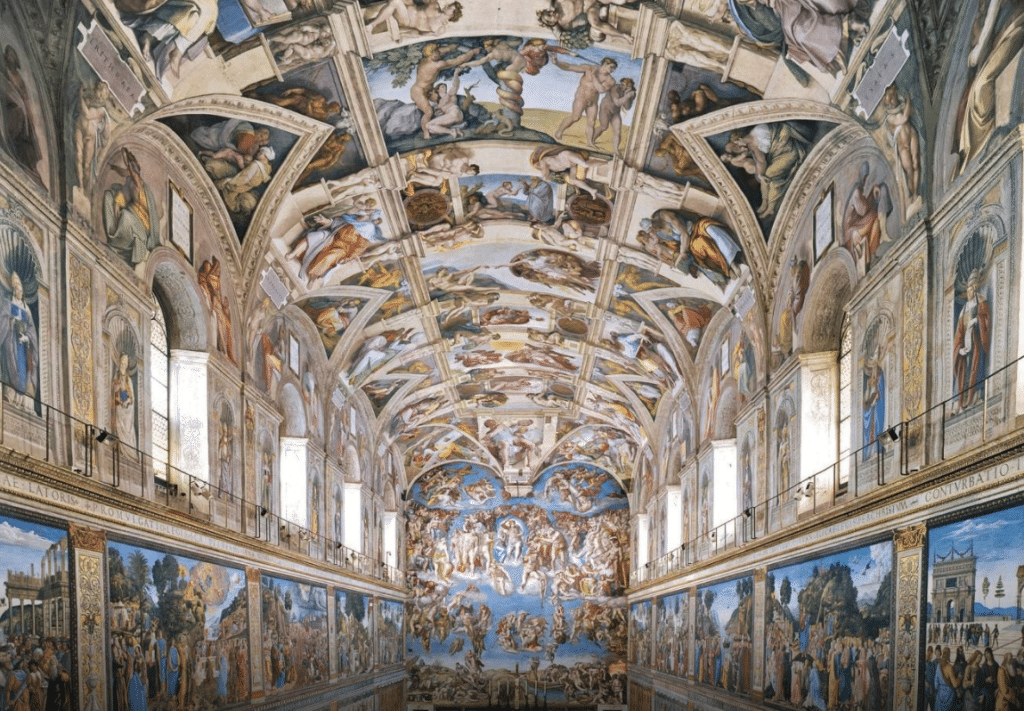
Of all the things to see in Vatican City, the Sistine Chapel is easily the most famous.
One of the main reasons the Sistine Chapel is so famous is because of the parts of it that were painted by Michelangelo.
Michelangelo’s The Last Judgment covers the whole altar wall of the chapel. He was also responsible for painting the ceiling of the Sistine Chapel as well.
The frescos and paintings that make up the Sistine Chapel were also painted by other Italian artists such as Sandro Botticelli, Pietro Perugino, Pinturicchio, Domenico Ghirlandaio and Cosimo Rosselli.
These paintings were created between the late 1400s and early 1500s.
In modern times, the Sistine Chapel serves as the venue where the successive pope is elected, this event is called a Conclave.
During this conclave a chimney is installed in the roof of the chapel. If a new pope has been elected, white smoke (from the burning of the ballots) will appear.
If a new pope has not been elected, black smoke (from the burning of the ballots along with wet straw and chemical additives) will appear.
Visitors to the Vatican Museums will have access to the Sistine Chapel with a regular admission ticket. Photography is forbidden inside the Sistine Chapel.
4. The Spiral Staircase
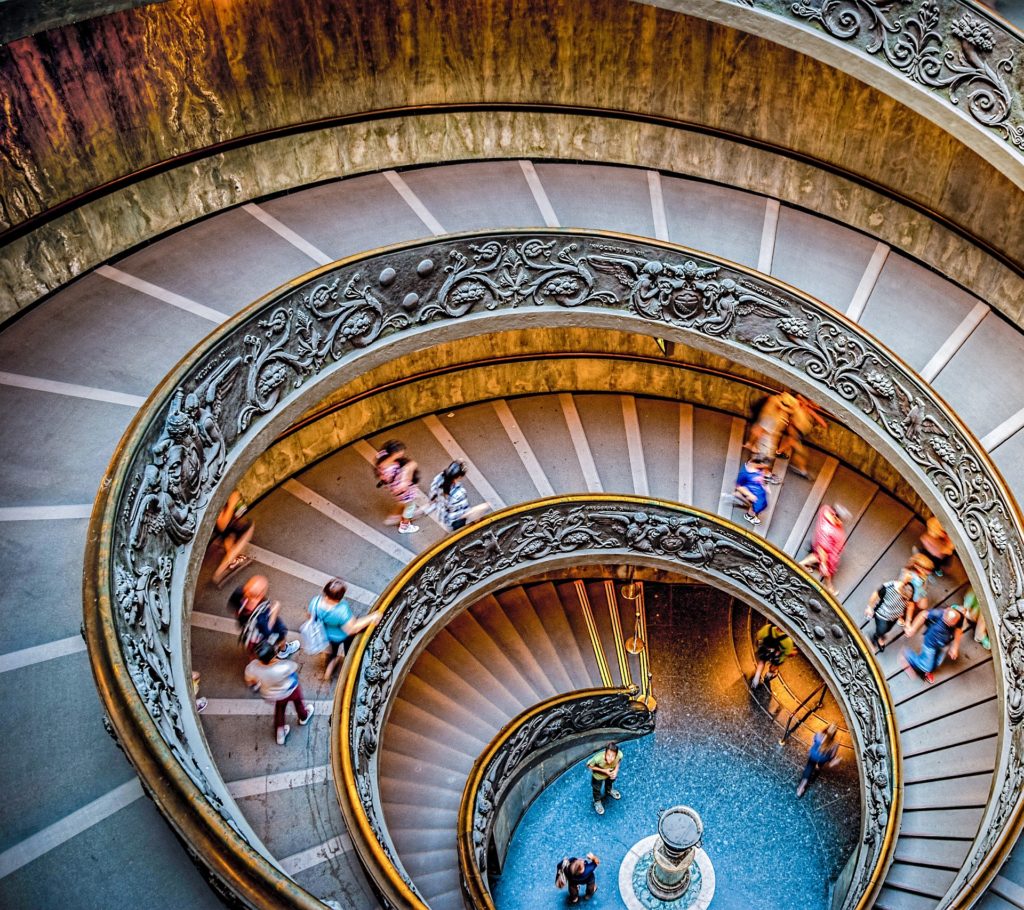
The famous Bramante Staircase is one of the prettiest things to see in Vatican City. You’ll come across the famous staircase as you are exiting the Vatican Museums.
The original staircase was built in 1505 and was designed by Donato Bramante. The staircase features Doric granite columns and a herringbone pattern.
This original staircase was designed to allow both people and pack animals to ascend and descend without interruption.
The modern staircase you see now was designed by Giuseppe Momo in 1932 and was inspired by the original staircase.
Like the original, the modern staircase remains a double-helix, allowing people to ascend and descend without crossing paths.
The view from both the top and bottom of the staircase is impressive. Take some photos before you begin your descent and again when you reach the bottom.
5. The Pinecone Courtyard
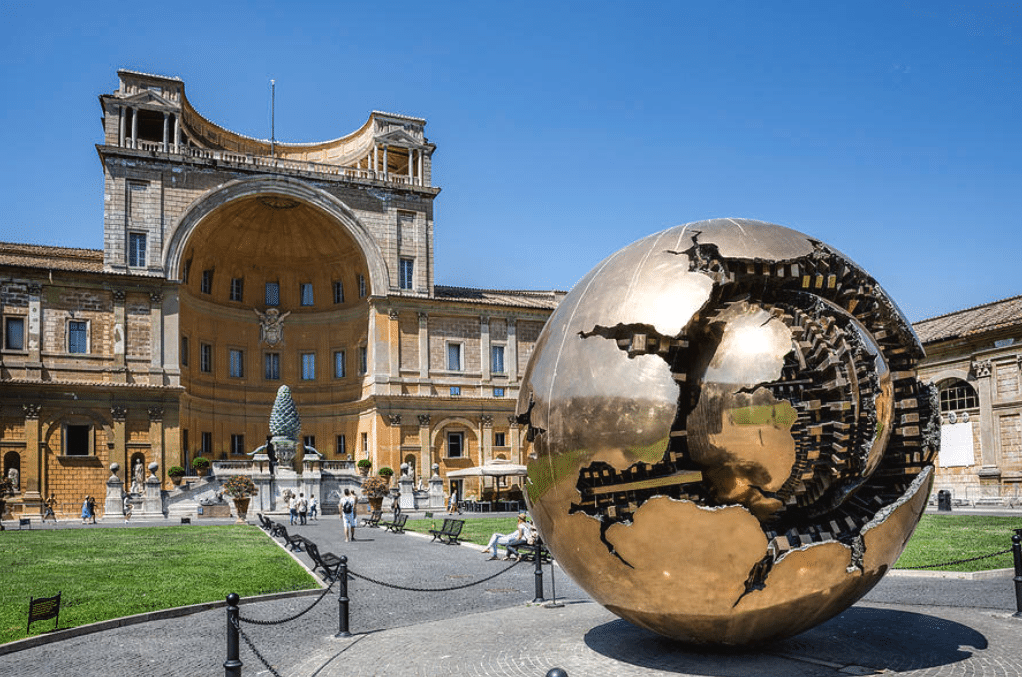
After you’ve finished in the Vatican Museums, make your way down to the famous Pinecone Courtyard.
The main attraction in the courtyard is the 13-foot tall bronze pinecone found against one of the courtyard’s inner walls.
The pinecone used to be a fountain that spouted water from its top but is now just a sculpture.
The piece was originally located across the river near the Pantheon but now resides at the Vatican.
Historians have dated the pinecone’s creation back to the 1st Century AD. It is believed to have been moved in the Middle Ages from the Pantheon to the courtyard of the old St. Peter’s Basilica. It was then moved again in 1608 to its current location in Pinecone Courtyard.
At the center of the courtyard, you’ll find another bronze sculpture called Sfera con Sfera, or Sphere within a Sphere.
The enormous bronze sphere was constructed by Italian artist Arnoldo Pomodoro in the 1960s. The artist states the inner ball represents the Earth and the outer ball represents Christianity.
The mirrored surface of the sculpture makes an excellent subject for photographs if you have the time to visit the courtyard.
Visitors can access the Pinecone Courtyard whenever the museum is open.
6. St. Peter’s Square
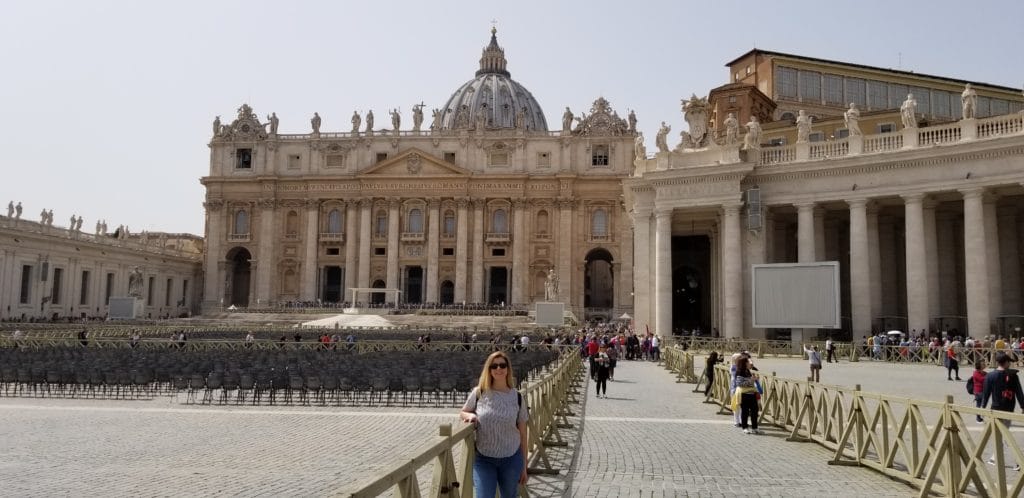
As you make you your way over to St. Peter’s Basilica, make sure to spend some time in St. Peter’s Square, or Piazza San Pietro.
This is where the Pope delivers the weekly Papal Audience address and where many other important church events are held.
St. Peter’s Square is one of the most impressive in the world, designed by Bernini in the 17th Century.
At the center of the square, you’ll see a tall ancient Egyptian Obelisk, erected back in 1586. The Obelisk stands about 84 feet tall.
You’ll also see a granite fountain designed by Bernini in 1675.
A dramatic series of columns, 4 deep, frame the entrance to the Basilica. Sitting at the top of the columns, you will see the famous saint statues.
Visitors will have access to St. Peter’s Square day or night, except when religious service or other events are being held.
If you’d like beautiful photos of the square, get up early and plan to arrive before 7:00 a.m. Just not on a Wednesday as that is when the weekly Papal Audience is held.
7. St. Peter’s Basilica
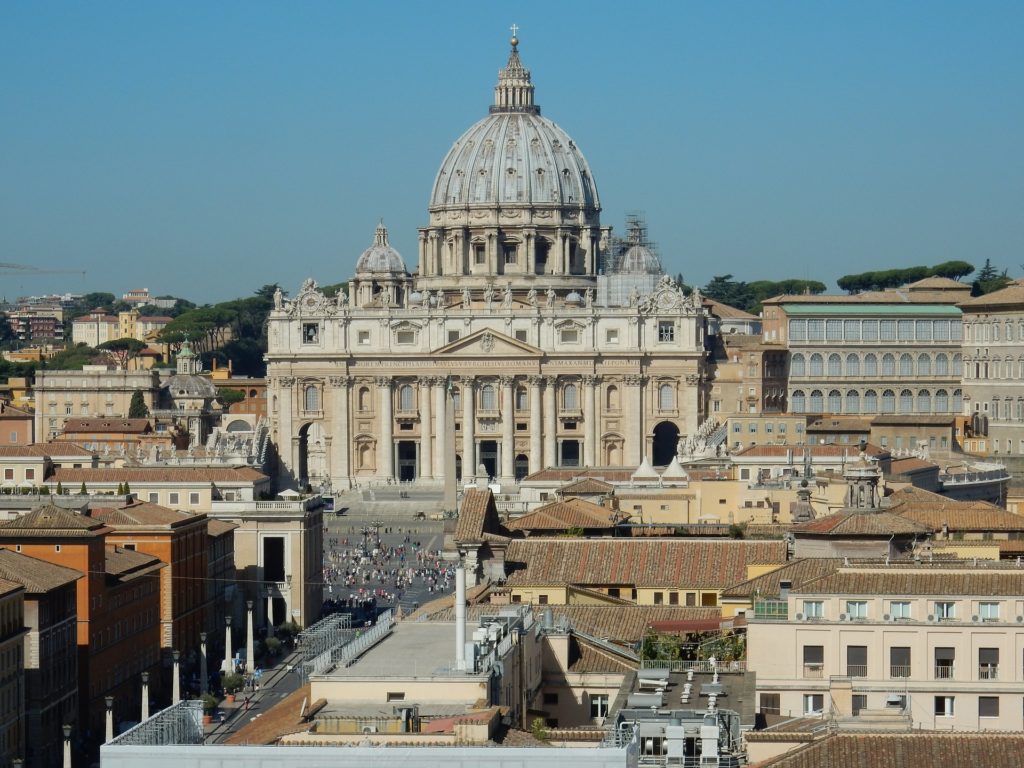
St. Peter’s Basilica should be at the top of your list of things to see in Vatican City. It is considered the most renowned work of Renaissance architecture and is the largest church in the world.
St. Peter’s Basilica was designed by Donato Bramante, Michelangelo, Carlo Maderno, and Gian Lorenzo Bernini.
Construction on the church began in 1506 and was not completed until 1626.
All visitors are welcome in St. Peter’s Basilica regardless of faith. Admission is free.
All guests must wait in line and go through security prior to entering the Basilica. The shortest wait times will be early in the morning and late in the afternoon.
St. Peter’s Basilica is open daily from 7:00 a.m. to 7:00 p.m. April through September and 7:00 a.m. to 6:00 p.m. October through March.
Guided tours and audio tours are available, along with a skip the line pass if you’re in a hurry. You may purchase these tours and passes on the Vatican City website.
Please note that the dress code at St. Peter’s Basilica is strictly enforced. Men must be wearing trousers and shirts with sleeves.
Women must also have their shoulders covered and cannot be wearing skirts or shorts above the knee.
8. St. Peter’s Baldachin
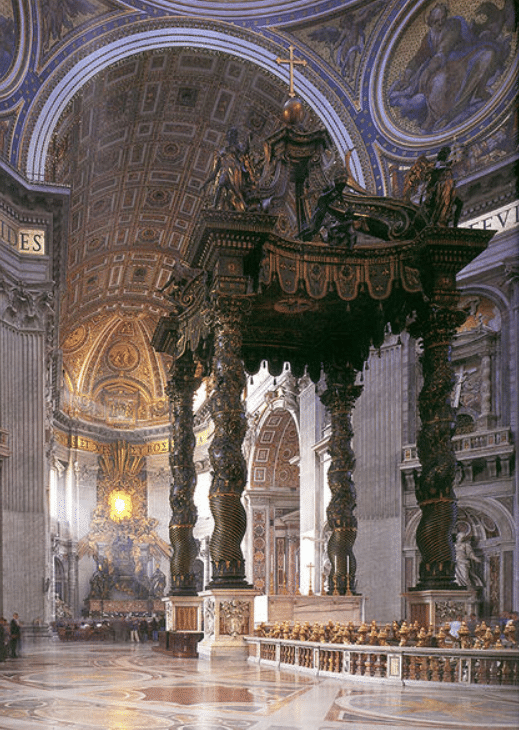
Once you’ve entered St. Peter’s Basilica and have had a chance to look around, be sure to take a few minutes to view St. Peter’s Baldachin.
You’ll find the Baldachin directly under the dome of the basilica.
St. Peter’s Baldachin is an elaborate Baroque bronze canopy that marks the exact location of St. Peter’s tomb beneath the basilica.
The Baldachin was commissioned by Pope Urban VIII in 1623 and was completed in 1634 by Italian artist Gian Lorenzo Bernini.
The canopy itself is massive and creates a focal point inside the Basilica.
Located beneath the canopy you will find the high altar, which is where members of the Catholic Church will officiate their ceremonies.
9. The Vatican Necropolis
Located about 5 to 10 meters beneath St. Peter’s Basilica is the Vatican Necropolis. The majority of this necropolis was discovered during excavations between 1940 – 1949.
The original purpose of the excavations was to locate the grave of St. Peter, who was believed to have been buried beneath St. Peter’s Basilica. During the excavation process, several mausoleums were discovered.
Visitors who would like to see the Vatican Necropolis may only do so with permission and special reservations.
Officials only allow 250 people per day into the underground necropolis and must visit as part of a guided tour.
Groups consist of 12 people or less and all visitors must be at least 15 years old.
It has been reported that the tours offered by the Excavations website are excellent and quite interesting.
If you are really interested in visiting, you are highly encouraged to take the few steps necessary to secure a reservation.
Visitors should be advised that the Necropolis is underground and accessed via stairs and narrow walkways.
You may wish to take this into consideration before requesting your reservation.
You may request a reservation in person or by faxing in your information.
You can find instructions for requesting your reservation by visiting the Excavations Office website. The cost of admission is 16 Euro per person.
10. The Pope
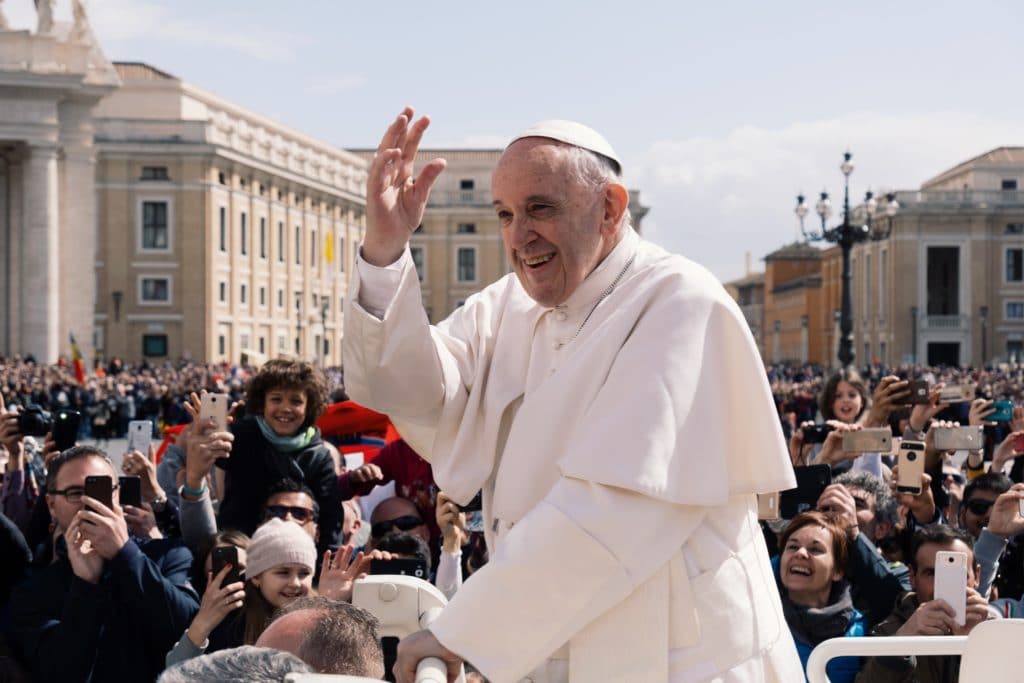
If you’re interested in seeing the Pope during your visit to Vatican City, you’ll want to plan your visit for a Wednesday. Pope Francis holds a weekly Papal Audience every Wednesday morning.
The Papal Audience is held from about 10:00 a.m. to about 11:30 a.m. If you would like a seat for this event, plan to arrive by 7:00 a.m.
If you arrive much later than that, it will be standing room only. Security for the event will open around 8:00 a.m.
While it does not cost anything to attend the Papal Audience, a ticket will be required to enter. You may obtain your free ticket by visiting the Papal Audience website and following the directions provided.
I will note, it has also been stated that even those without a ticket may attend, but I have not confirmed this and I recommend getting one if you plan to attend.
Most Papal Audiences will be held inside the walls of Vatican City at St. Peter’s Square.
However, the event is held inside the Paul VI Auditorium Hall, to the right of the basilica, during the cold winter months, or when it is raining.
Be sure to check the Pope’s schedule before planning your visit if seeing the Pope is a top priority. The Pope does not hold the Papal Audience if he is traveling or on holiday.
If you’d like to be well-prepared for your visit, be sure to check out my Tips for Visiting Vatican City.
I hope you find this guide to the top things to see in Vatican City helpful, and that it helps you navigate your way around.
Related Posts
Top 10 Things to see in Vatican City
If you’re planning a visit to Rome, chances are you’d like to visit Vatican City…
How to Avoid Crowds at Vatican City
Photo by Matt Sawyers Curious how to avoid crowds at Vatican City? This post will…
Top 9 Tips for Visiting Vatican City
These tips for visiting Vatican City will help you make the most of your visit…

Eden Fite
Solo Traveler | Dog Lover | Avoider of CrowdsI help busy people find creative ways to travel more.
